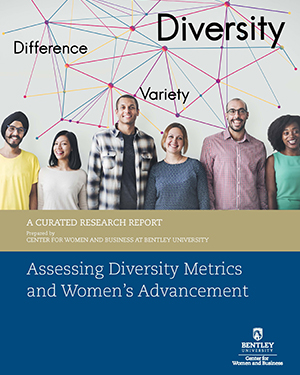Diversity Metrics Research Report Request
 Thank you for your interest in the Gloria Cordes Larson Center for Women and Business (CWB) curated research report Assessing Diversity Metrics and Women's Advancement. Download the full report.
Thank you for your interest in the Gloria Cordes Larson Center for Women and Business (CWB) curated research report Assessing Diversity Metrics and Women's Advancement. Download the full report.
Executive Summary
While companies once looked more narrowly at the challenges of achieving gender equity, most organizations today see gender as one variable among many in their approach to promoting diversity. An effective measurement system enables an organization’s leadership to track progress toward greater gender equity in numerical terms while also helping them understand in human terms what might push those numbers in the right direction.
Good measurement systems can demonstrate the value of women-focused initiatives to skeptical managers, who may not realize how these programs can positively impact growth, revenues, innovation, and other corporate goals. At the same time, effective use of D&I data removes emotion from the equation. Metrics allow for objectivity and a practical, problem-solving approach to D&I challenges.
While the value of diversity metrics is clear, creating and managing an effective, well-understood measurement system can present multiple challenges. These include:
- The lack of reliable external benchmarks and industry best practices.
- Creating a system that goes beyond recruitment and retention metrics and looks at the impact of greater diversity on innovation and other business goals.
- Potential lack of commitment from the CEO and other senior-level managers.
- Inadequate budgets that limit the ability to create high-quality measurement systems.
- For international companies, a U.S.-centric view of metrics that cannot be applied to different regions.
- Specific to gender, the difficulty of attributing women’s progress to D&I programs.
Promoting gender diversity goes beyond recruiting more women; it requires the creation of internal programs that make it possible for women to use all their talents in service of promoting organizational excellence. But demonstrating the business benefits of these programs remains surprisingly difficult.

